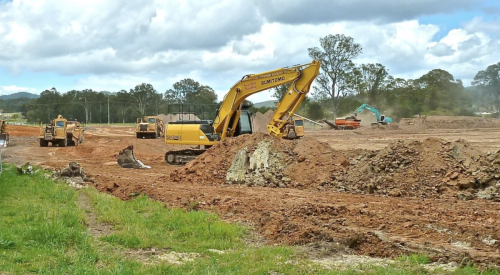In hot markets across the country, this might be harder now than ever before, but it’s close to imperative for the startup business we profile in this series.
A new home building firm aiming for a leadership position in production building needs multiple locations to establish name recognition and reach critical mass in a competitive market. With high demand for the firm’s limited working capital, tying up money in cash land buys would be a bad idea.
A young buck with designs on starting a production building company would be smart to line up land positions on rolling options with a number of residential developers before pulling the trigger on a startup.
"If you’re a person who works in the industry for a proven production builder and you have a lot of contacts, you might be able to persuade a couple of developers to give you a shot," says Lonnie Fedrick, chairman of Newmark Homes, a Houston-based Giant. Fedrick started Newmark just that way in 1983. Now publicly traded, Newmark is likely to top $500 million in revenue this year. So it can be done.
"Other people’s money is what you want," says Atlantan Charles Sheron, who started his own luxury home building firm in the early 1970s, moved into land development in the 1980s and now does almost nothing but develop land. He’s one of those who take chances on young home builders starting out.
"You need to get your ducks in a row before committing to anything. Establish relationships with a couple of lenders and developers before you launch.
"You come to a developer like me, and I’ll say, ‘You sign a contract to purchase the lots, and we’ll let you take down the first 12 to build a model and get started. Then as you sell those lots, we’ll replace them with others as we roll through the subdivision together.’
"As long as your sales stay strong, you keep your option to close on lots in new phases of development as they become available and as you need them," says Sheron.
This is the classic strategic alliance between builder and developer that works for small companies starting up and, in many markets, also for the Giants of the industry. But in a growing number of markets, it’s almost impossible because burgeoning housing demand and soaring prices for even undeveloped parcels keep developers and builders scrambling for a shot at any available land well ahead of actual building operations. In these markets, to be a production builder, the market virtually demands that you also develop your own land.
That’s the story in Southern California, most of the Northeast, South Florida and suburban Chicago. And it’s becoming harder to buy lots on rolling options in many markets where it used to be standard practice.
"It’s getting much more difficult. Terms are getting tougher," says David Weekley of Houston-based Giant David Weekley Homes, who still refuses to take the risk associated with carrying land and developing it. "The only way we are able to do it is by having a reputation as a builder people want in their communities."
Maybe so, but that might not help our new startup builder, who has to operate in the local market he or she knows and has no reputation to sell until after the business is established. Should a startup ever develop land? Builders interviewed split on that one.
If the market is one of those listed above, it might be the only choice available short of moving to another city and building new contacts.
If you must develop land, interviewed builders strongly recommend establishing separate land investment partnerships, probably with a few wealthy private investors (local doctors and lawyers might be the best targets), to buy raw land, develop and entitle it, and then feed it to the home building company.
Other builders interviewed for our series maintain that it's never a good idea for any builder to develop land. The risk of carrying land into a market slowdown is just too great, Weekley says.
Fedrick cautions that no matter how a new builder comes by his first land parcels, they are not likely to be choice locations.
"The big developers are not going to sell a new builder ‘A’ locations," says Fedrick. "Those will go to the proven performers. You’ll have to deal with ‘B’ locations, so you’d better keep your overhead real low.
"So you have to accept markedly thinner margins in the first few years."
If a new builder has to develop his or her own land, it’s also likely to be in a ‘B’ location, simply because ‘A’ sites will be expensive and hotly contested by larger, more established competitors.
No wonder so many home builder startups fail in the first year.












